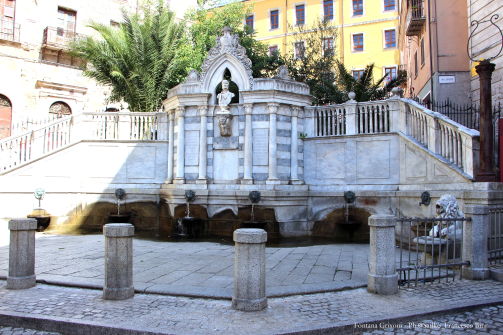As of 1421, Ozieri was part of the fief known as the “States of Oliva,” belonging to the noble Valencian family of Centelles, who entrusted its administration to trusted governors. In 1594, the governor at the time, Don Giovanni di Castelvì – a Sardinian nobleman of Iberian descent – had a fountain built at the spot where an ancient spring, the main spring of the town, gushed out.
The fountain, with eight mouths, was designed with an ingenious system of nozzles and valves connected to a cistern behind the facade. Even today, this system makes it possible to regulate the flow of water. From the small tower located in the back garden, it is possible to access, via a ladder ladder, a tunnel about twenty meters long that leads to the underground spring, set in the limestone rock. From there, the water reaches the cistern that feeds the fountain’s mouths.
The present monumental structure, known as the “Grixoni Fountain,” was begun in 1877 and completed in 1882, designed by architect Giovanni Pietrasanta, thanks to the generous donation of Ozierese nobleman Don Giuseppe Grixoni.
Today the fountain is one of the symbols of the city: a refined architectural composition made of granite and marble, embellished with an elegant pavement and the presence of two lions placed on either side, as ideal guardians of water and the historical memory of Ozieri.









